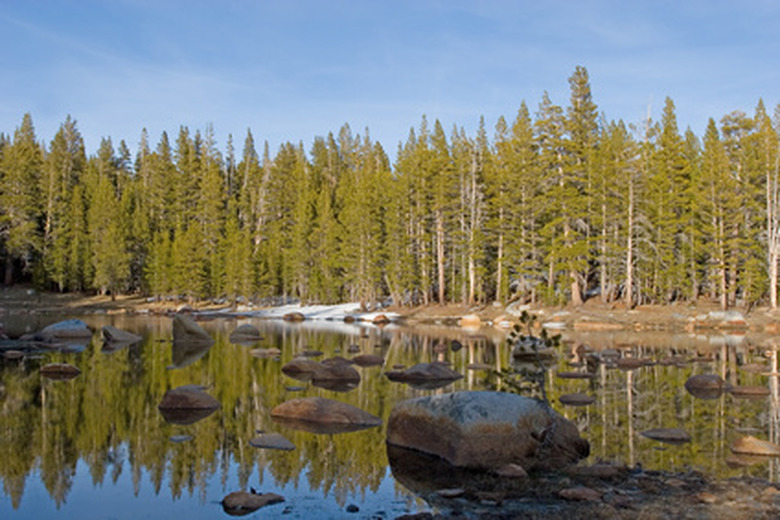Pine Trees In Alaska
In North America, the pine family (Pinaceae) is represented by species of pine, larch, spruce, hemlock, douglas firs, and true firs. Of the 35 species of pines (Pinus), there are two distinguished groups: soft and hard pines. Needles of pine trees grow in bundles known as fascicles. In Alaska only two species of pine occur naturally, but there are many other species that grow in Alaska within the pine family.
Lodgepole Pine
The lodgepole pine (Pinus contorta), a hard pine, has such a large range that it is the only conifer native to both southeast Alaska and Mexico. The hard green needles grow in stiff bundles of two, are 1 to 3 inches long, and can stay on the branches for more than three years. Bark is a reddish color. The 1 to 2 inch cones, which have small stiff prickles on each of their scales, stay closed for years, but will open with heat—that is why areas that have been swept by forest fire will often reseed quickly if lodgepole pines are in the area. In coastal areas, it can grow to 30 feet tall and in other areas it may grow to 80 feet. It likes sandy soils, but also grows well in bogs.
- In North America, the pine family (Pinaceae) is represented by species of pine, larch, spruce, hemlock, douglas firs, and true firs.
- The lodgepole pine (Pinus contorta), a hard pine, has such a large range that it is the only conifer native to both southeast Alaska and Mexico.
Shore Pine
The shore pine (Pinus contorta var.) grows in areas of Lynn Canal and northern parts of southeast Alaska, and also in old burned areas of the British Columbia Coast Mountains and the crest of the Cascades. In general, the shore pine differs from the lodgepole pine in that it is usually shorter, about 60 feet, and has a crooked trunk with thicker, darker bark and a pillowy crown of branches. The dark green needles grow in pairs and are also often curved or crooked, and grow 1 to 3 inches long. The reddish-green, egg-shaped seed cones grow in clusters at the tips of branches, and have sharp tips. In swampy and subalpine habitats, the shore pine grows in a dwarf form that is just 3 to 6 feet tall with very twisted trunk and branches.
Sitka Spruce and Hemlocks
Sitka spruce (Picea sitchensis) is common in Alaska, especially southeast Alaska. Although it is in the pine family, it is a spruce species. Sitka spruces are large, up to 230 feet tall and 6 feet in diameter. They have thin, scaly, reddish-brown bark and long, horizontal branches. The extremely stiff and sharp needles are yellow-green to blue-green, grow to a half or full inch in length, and are four-sided (although they appear flat). Seed cones are two to three inches long, cylindrical, and reddish-brown with irregular wavy scales.
- The shore pine (Pinus contorta var.)
- In general, the shore pine differs from the lodgepole pine in that it is usually shorter, about 60 feet, and has a crooked trunk with thicker, darker bark and a pillowy crown of branches.
Western and Mountain hemlocks are also quite common in the forests of Alaska, and they are also in the pine family.
References
- Plants of the Pacific Northwest Coast, Jim Pojar and Andy Mackinnon, 1994
- Golden Field Guides: Trees of North America, C. Frank Brockman, 2001
- National Geographic, Trees from Lewis and Clark Expedition
